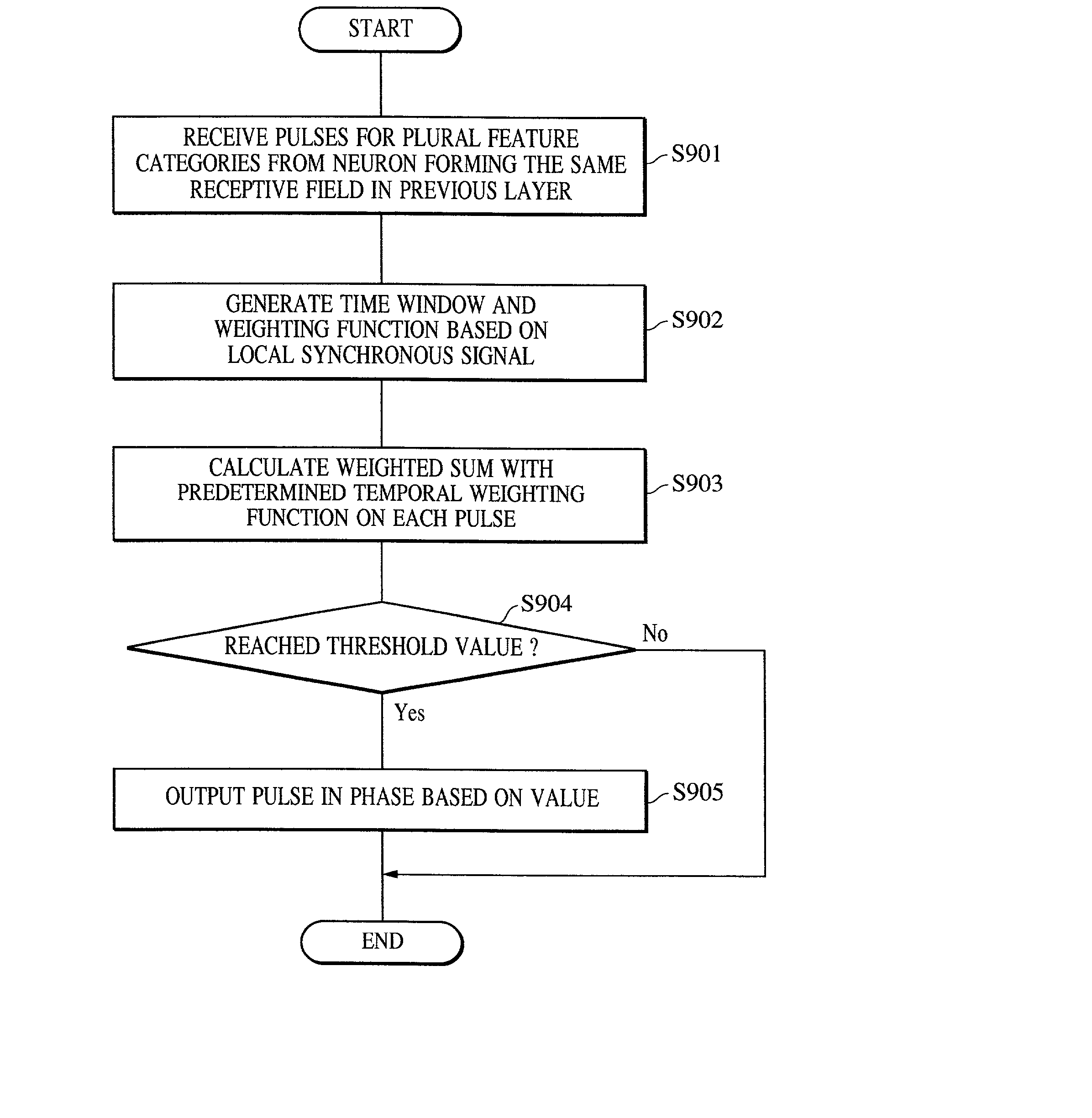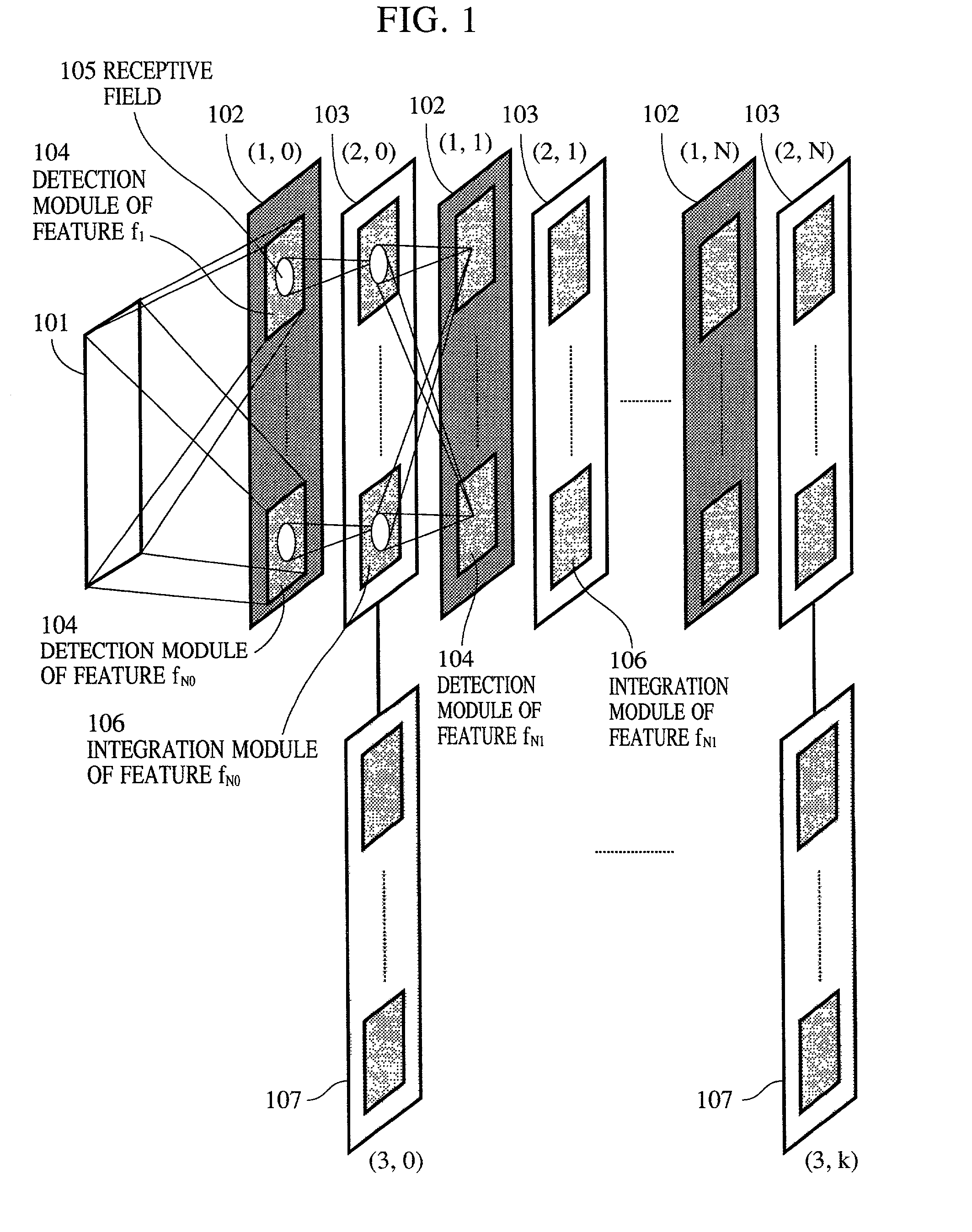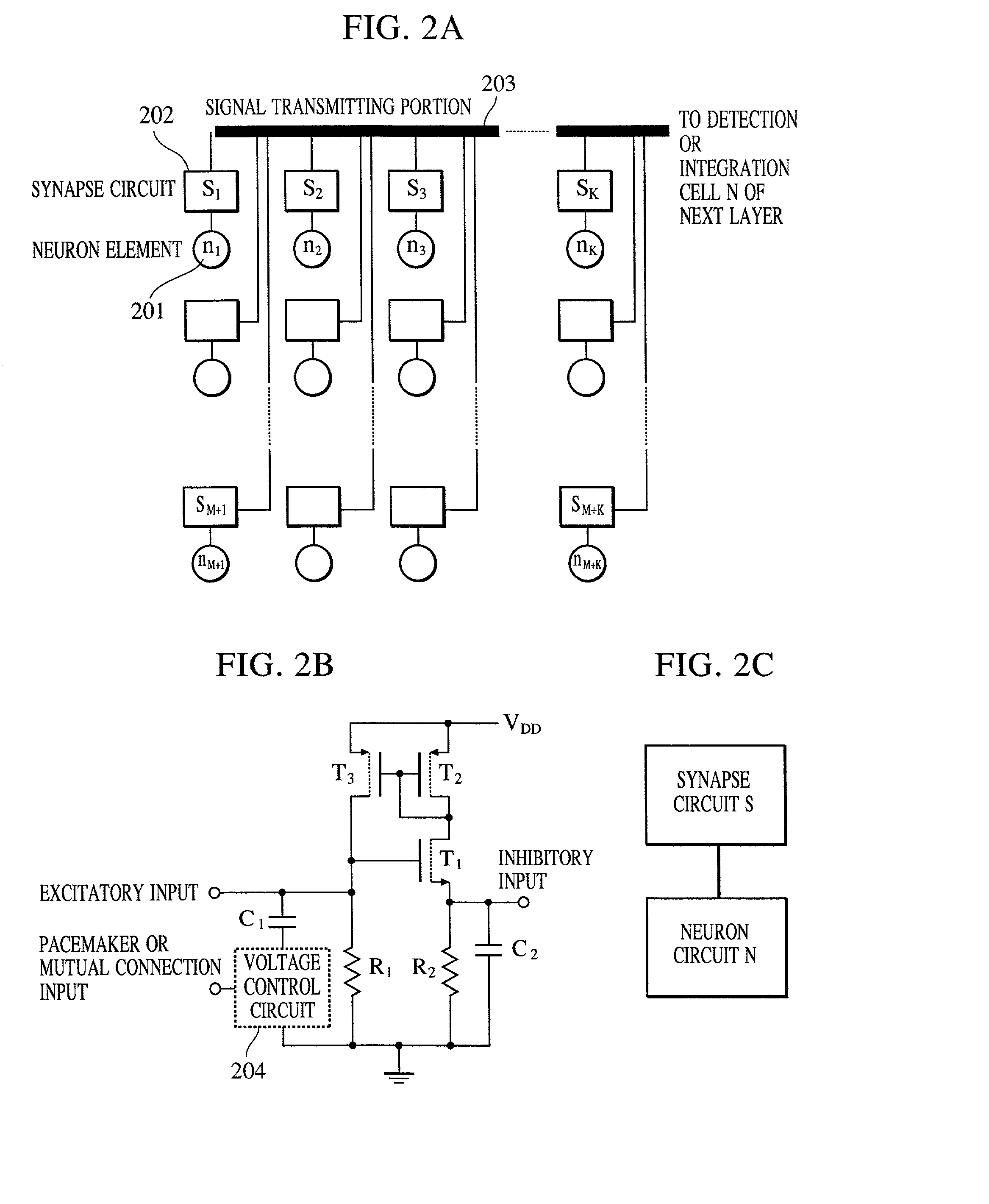Apparatus and method for detecting or recognizing pattern by employing a plurality of feature detecting elements
a technology apparatus, applied in the field of apparatus and method for detecting or recognizing patterns by employing a plurality of feature detecting elements, can solve the problems of limited information processing capability, no methods available, and application limitation to digital representation of information
- Summary
- Abstract
- Description
- Claims
- Application Information
AI Technical Summary
Benefits of technology
Problems solved by technology
Method used
Image
Examples
first embodiment
[0225] The modulation by a synapse is expressed by W.sub.a=S.sub.ijW.sub.b when the pulse width of a pre-synaptic signal is denoted as W.sub.b, and the pulse width of a post-synaptic signal is denoted as W.sub.s. In this case, S.sub.ij means the same as the connection strength in expression (5) of the To take a wide dynamic range for the modulation, the basic pulse width of a pulse signal must be set to a value that is sufficiently smaller than the period, i.e., a basic pulse interval.
[0226] A neuron fires or outputs a pulse when its potential exceeds a predetermined threshold value because of the charges accumulated due to the inflow of a plurality of pulse currents that represent predetermined feature elements. This embodiment does not particularly need the weighted addition of arrived pulses for each sub time window, which has been described in the first embodiment, but implements integration in a time window having a predetermined width. In this case, a feature element or a gra...
fourth embodiment
[0245] The general configuration of the pattern detecting or recognizing apparatus is identical to that shown in FIG. 1.
[0246] In this embodiment, the feature detection layers (1,0), (1,1), . . . and feature integration layers (2,0), (2,1), . . . shown in FIG. 1 form a set of processing channels at a plurality of resolutions or scale levels as a whole. Each processing channel implements processing at one scale level or resolution to detect and recognize low- to high-order features by hierarchical parallel processing.
[0247] Each layer has a plurality of circuit elements that belong to different processing channels, the circuit elements being disposed in a predetermined layout. Referring now to the examples shown in FIG. 15 and FIG. 16, the configuration of the processing channels will be described in conjunction with the feature integration layer (2,0).
[0248] Both examples shown in FIG. 15 and FIG. 16 form one processing channel with a subsequent layer if the scale level or the reso...
fifth embodiment
[0315] FIG. 21 shows a network configuration employed in the More specifically, in a feature detection layer (1,k), wherein "k" is a natural number, features are detected that are higher-order than the features obtained by the Gabor wavelet transform or the like and extracted from a layer (1,0). As shown in FIG. 21, however, from a layer (1,1) and after, it is possible to eliminate physical differences among processing channels in circuit configuration.
[0316] Referring to FIG. 21, S.sub.k,m is detected in a layer (1,0), and it indicates a feature category of a scale level m and of a k-th feature category. C.sub.k,m is integrated in a layer (2,0), and it indicates a feature category of a scale level m and of a k-th feature category. From a layer (1,1) and after, the feature categories to be detected and integrated have no scale level indices attached thereto.
[0317] FIG. 23 shows the transition of signal trains. In order to obtain scale-invariant representation of information by puls...
PUM
 Login to View More
Login to View More Abstract
Description
Claims
Application Information
 Login to View More
Login to View More - R&D
- Intellectual Property
- Life Sciences
- Materials
- Tech Scout
- Unparalleled Data Quality
- Higher Quality Content
- 60% Fewer Hallucinations
Browse by: Latest US Patents, China's latest patents, Technical Efficacy Thesaurus, Application Domain, Technology Topic, Popular Technical Reports.
© 2025 PatSnap. All rights reserved.Legal|Privacy policy|Modern Slavery Act Transparency Statement|Sitemap|About US| Contact US: help@patsnap.com



